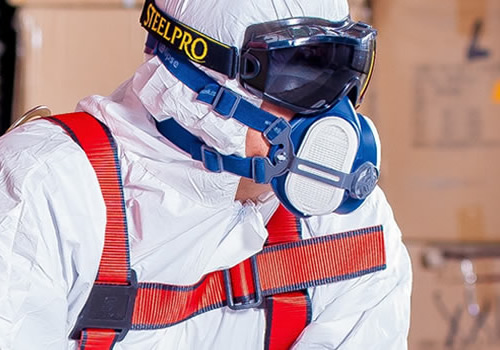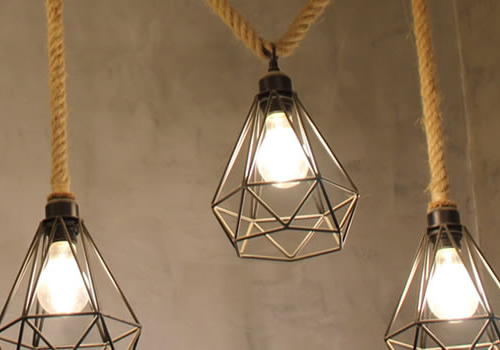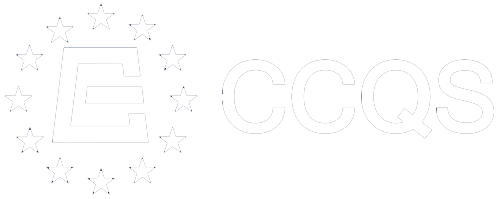CE marking and conformity with EU requirements is a complex topic. If your equipment does not fully meet all requirements you may have problems with clients and enforcement agencies. CCQS can provide advice on routes to conformity and requirements for design and documentation and will ensure that you are conforming with all necessary Directives and applying the correct standards.
HOW DOES CE MARKING WORK?
Although a CE marking is generally perceived as a safety marking, it is in fact a Free Trade marking. The intent of CE marking Directives is to ensure that the same product can be offered for sale anywhere in the EU by ensuring that technical requirements are the same for all EU member states.
If a product carries a CE marking, the manufacturer or importer is claiming access to the EU market because the product meets all the relevant requirements of all relevant Directives.
CE marking Directives cover a variety of different types and aspects of equipment. This includes:
Active implantable medical devices
Appliances burning gaseous fuels
Cableway installations designed to carry persons
Eco-design of energy related products
Electromagnetic compatibility
Equipment and protective systems intended for use in potentially explosive atmospheres
Explosives for civil uses
Hot-water boilers
Household refrigerators and freezers
In vitro diagnostic medical devices
lifts
low voltage
machinery
Measuring instruments
Medical devices
Noise emission in the environment
Non-automatic weighing instruments
Personal protective equipment
Pressure equipment
Pyrotechnics
Radio and telecommunications terminal equipment
Recreational craft
Safety of toys
Simple pressure vessels
CCQS specialises in Personal Protective Equipment, Machinery, EMC for electronics Directives. These cover most industrial and consumer products, but we know a lot about other Directives as well, so even if we cannot help you directly, we may be able to provide some useful advice or point you to someone else who can help.
Not absolutely all products are covered by CE marking Directives but, those which are not still fall within the scope of the General Product Safety Directive. This places a duty on manufacturers and importers of equipment to ensure that these products are safe in normal and intended use.
CE marking Directives contain Essential Requirements which are the fundamental basis of conformity. Technical details of how the requirements can be met are provided by EN harmonised standards.
For most equipment, manufacturers can make their own assessment of whether their equipment meets the requirements of the Directives but in some Directives or for some classes of equipment it is necessary for a Notified Body to inspect the items and give some kind of certification.
 Personal Protective EquipmentStarting from April 21, 2018, the European Union Personal Protective Equipment Regulations (EU) 2016/425 came into effect. All personal protective equipment products sold in the EU market must meet the requirements of this regulation and be labeled with a CE mark. Since January 1, 2021, due to the separation of the UK from the EU, the personal protective equipment regulations under the UK legal framework will come into effect at the same time. Personal protective equipment products can enter the English Market market only after obtaining UKCA certification.More
Personal Protective EquipmentStarting from April 21, 2018, the European Union Personal Protective Equipment Regulations (EU) 2016/425 came into effect. All personal protective equipment products sold in the EU market must meet the requirements of this regulation and be labeled with a CE mark. Since January 1, 2021, due to the separation of the UK from the EU, the personal protective equipment regulations under the UK legal framework will come into effect at the same time. Personal protective equipment products can enter the English Market market only after obtaining UKCA certification.More Industrial MachineryStarting from July 19, 2023, the EU Machinery Regulation (EU) 2023/1230 will come into effect and will have a transition period of 42 months. That is, it will officially begin implementation on January 14, 2027. All industrial machinery products sold in the EU market must meet the requirements of this directive and be labeled with the CE mark and/or accompanied by an EC declaration of conformity. The EU Machinery Regulations (EU) 2023/1230 apply to mechanical equipment with any moving component and also to safety components placed separately on the market.More
Industrial MachineryStarting from July 19, 2023, the EU Machinery Regulation (EU) 2023/1230 will come into effect and will have a transition period of 42 months. That is, it will officially begin implementation on January 14, 2027. All industrial machinery products sold in the EU market must meet the requirements of this directive and be labeled with the CE mark and/or accompanied by an EC declaration of conformity. The EU Machinery Regulations (EU) 2023/1230 apply to mechanical equipment with any moving component and also to safety components placed separately on the market.More LowVoltage DirectiveWith the development of society, modern electronic and electrical products such as lighting fixtures, communication tools, household appliances, electric tools, and IT equipment have become very popular. While bringing convenience to people's lives, they have also exacerbated the deterioration of the electromagnetic environment, causing various electronic devices to interfere with each other, and in severe cases, even unable to work properly.More
LowVoltage DirectiveWith the development of society, modern electronic and electrical products such as lighting fixtures, communication tools, household appliances, electric tools, and IT equipment have become very popular. While bringing convenience to people's lives, they have also exacerbated the deterioration of the electromagnetic environment, causing various electronic devices to interfere with each other, and in severe cases, even unable to work properly.More

